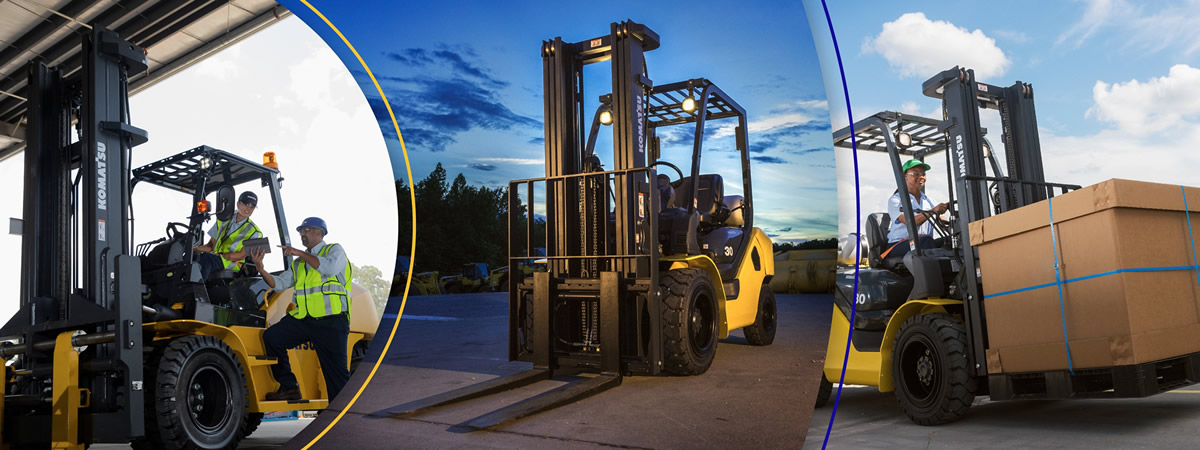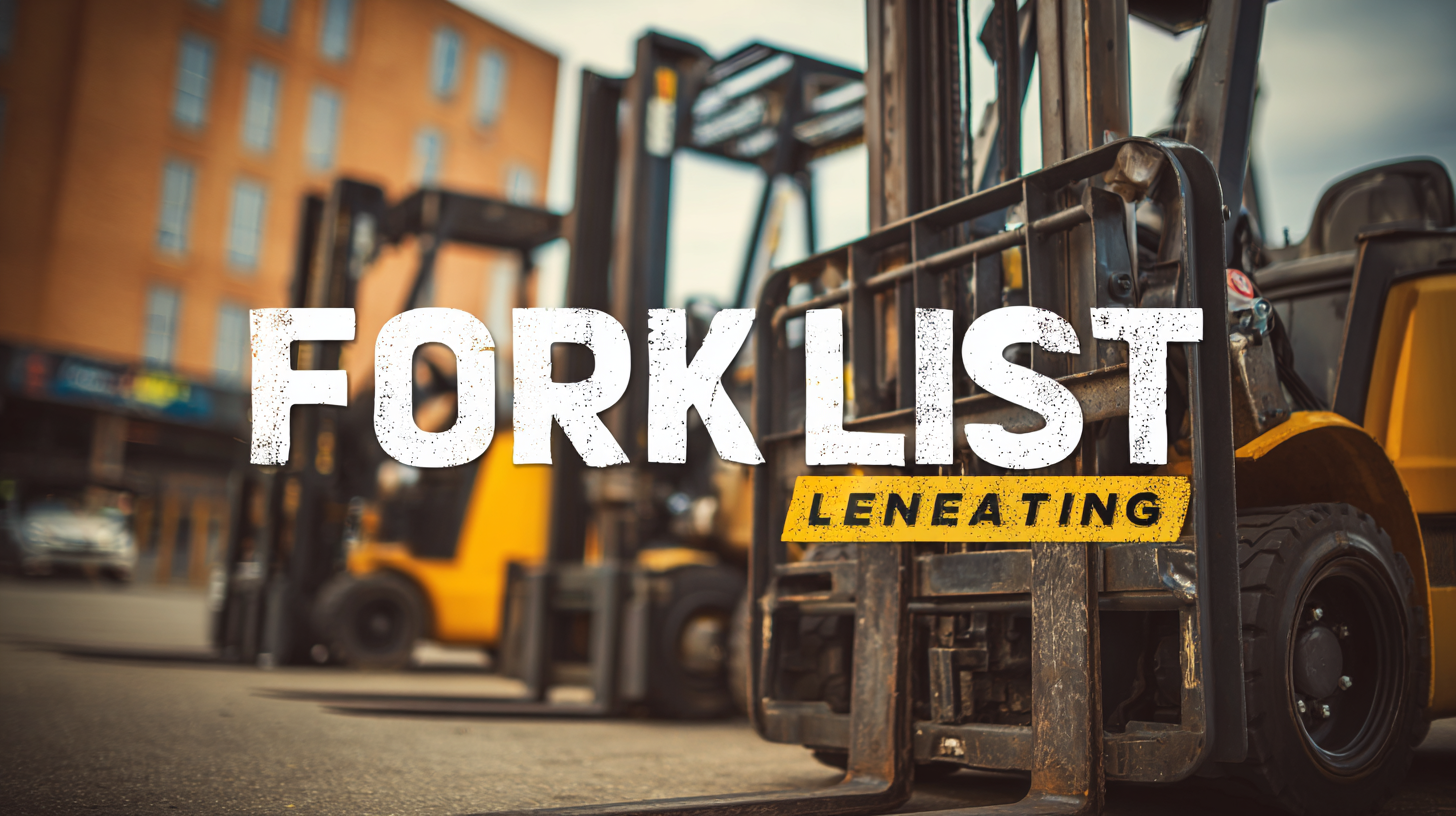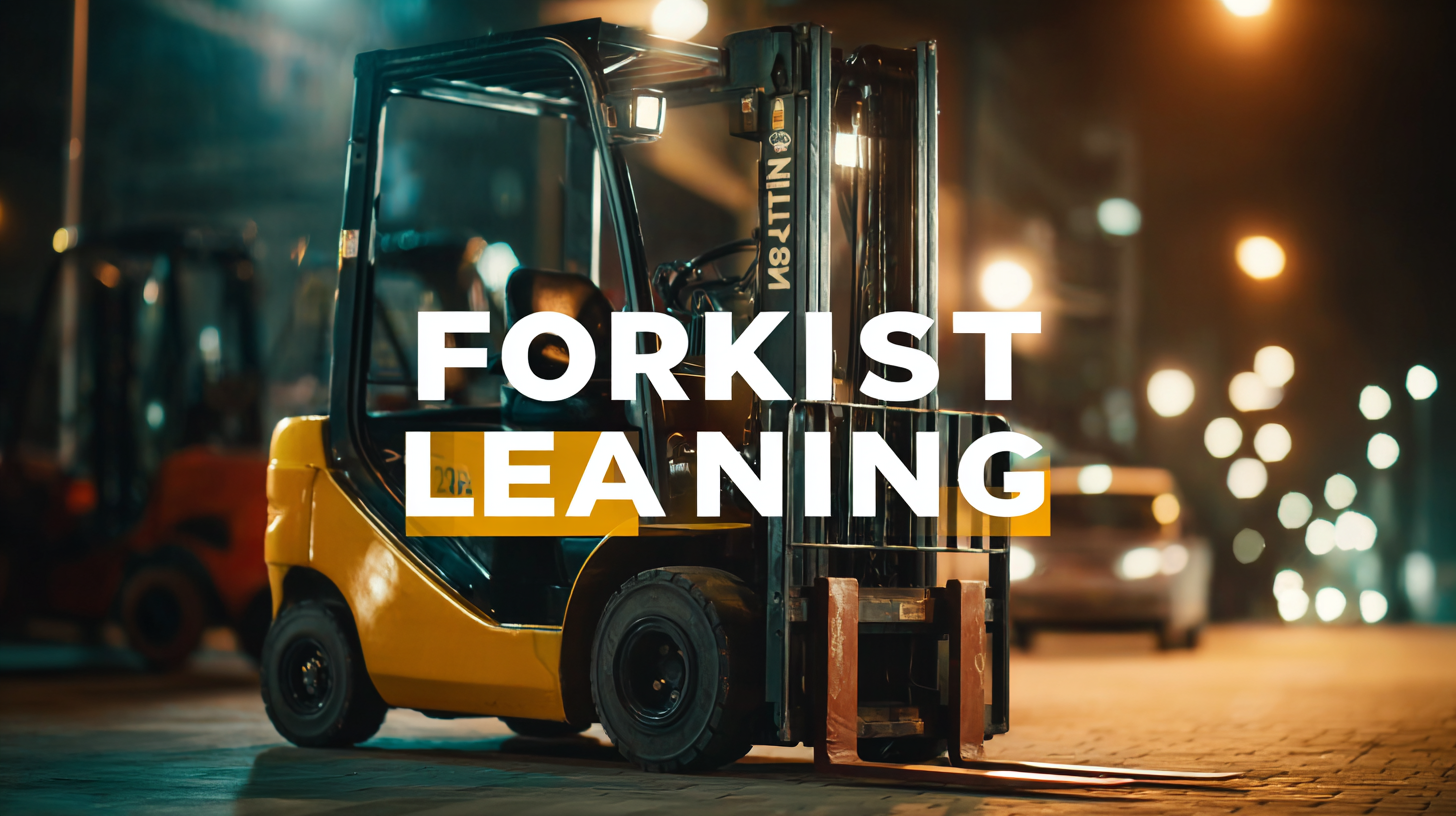
In today's fast-paced industrial landscape, efficient material handling is crucial for operational success, and Forklift Leasing has emerged as a popular solution among businesses seeking scalability and cost-effectiveness. According to a report by the Material Handling Industry of America, the forklift market is projected to reach $30 billion by 2025, driven by the increasing demand for enhanced warehouse efficiency and logistics automation. However, navigating the complexities of forklift leasing can pose significant challenges for organizations, from selecting the right type of forklift to ensuring compliance with safety regulations. As companies continue to adapt to evolving market conditions and customer expectations, understanding these common challenges in forklift leasing is essential for making informed decisions that align with their operational goals and budget constraints.

Understanding the total cost of ownership (TCO) in forklift leasing is crucial for businesses seeking to optimize their operational budget. According to a study by the Industrial Truck Association, the TCO for a forklift can vary significantly based on factors such as leasing terms, usage intensity, maintenance needs, and operational efficiency.
On average, companies spend between $10,000 and $20,000 annually on ownership costs, which may include leasing fees, insurance, maintenance, and fuel expenses.
When evaluating leasing options, businesses must consider not only the upfront leasing rates but also the long-term implications of maintenance and repair costs. A report from the National Association of Manufacturers indicates that proactive maintenance can reduce overall costs by up to 25%. This underscores the importance of selecting the right lease agreement that includes comprehensive service packages.
Furthermore, understanding usage patterns can lead to better-suited equipment choices, allowing for enhanced productivity and cost savings in the long run. By thoroughly assessing TCO, organizations can make informed decisions that align with their financial and operational goals.
When it comes to forklift leasing, understanding rental terms is crucial in optimizing costs and enhancing operational efficiency. The choice between fixed and flexible agreements can significantly impact a business's bottom line. A report by the Industrial Truck Association indicates that nearly 40% of warehouse operations prefer flexible leasing terms to accommodate fluctuating demand, suggesting a growing trend toward adaptability in inventory and equipment management.
 Fixed agreements often provide stability, with predetermined terms that can simplify budgeting and financial planning. However, they may not effectively address unexpected operational changes, such as seasonal spikes in demand. In contrast, flexible agreements, as highlighted by a recent survey from the Material Handling Industry, enable businesses to scale their fleet size more dynamically, reducing idle equipment costs. Companies leveraging flexible terms have reported up to a 25% improvement in inventory turnover rates, showcasing the advantages of aligning forklift availability with real-time operational needs.
Fixed agreements often provide stability, with predetermined terms that can simplify budgeting and financial planning. However, they may not effectively address unexpected operational changes, such as seasonal spikes in demand. In contrast, flexible agreements, as highlighted by a recent survey from the Material Handling Industry, enable businesses to scale their fleet size more dynamically, reducing idle equipment costs. Companies leveraging flexible terms have reported up to a 25% improvement in inventory turnover rates, showcasing the advantages of aligning forklift availability with real-time operational needs.
Ultimately, choosing the right leasing structure is about aligning financial strategy with operational goals, making it essential for businesses to carefully evaluate their unique needs and market conditions.
When navigating the landscape of forklift leasing, understanding the nuances of maintenance and repair responsibilities within contracts can significantly impact operational efficiency. According to a report by the Industrial Truck Association, maintenance costs account for approximately 15-20% of total operational expenses for companies reliant on material handling equipment. This places a premium on understanding who bears the responsibility for repairs and routine maintenance in leasing agreements.
In many cases, leasing contracts specify that the lessor is responsible for major repairs, while the lessee handles minor maintenance tasks. However, the boundaries between these responsibilities can often be blurred. For example, a recent survey by the National Association of Wholesaler-Distributors found that 30% of companies faced unexpected maintenance costs due to unclear leasing terms. Companies must scrutinize their contracts to ascertain the specifics of maintenance responsibilities, as failing to do so can lead to budget overruns and operational delays. By clarifying these obligations upfront, businesses can navigate forklift leasing more effectively and mitigate potential financial strains.
The forklift leasing industry is being influenced significantly by market trends, leading to fluctuations in lease rates and availability. As the global forklift trucks market is expected to grow from USD 86.57 billion in 2025 to an impressive USD 180.47 billion by 2032, businesses must adapt to these changes to optimize their leasing strategies. This growth indicates increased demand for equipment, which can strain availability and drive up costs. Companies must stay informed about these trends to make effective leasing decisions.
**Tip 1:** Keep a close eye on market forecasts and trends to anticipate price changes. Understanding when to lease or purchase can provide a competitive advantage, especially in a rapidly changing market.
As companies navigate these challenges, the rise of automation and sustainability trends in regions like Singapore is also reshaping the industry. The push for more efficient, eco-friendly forklifts is not just a trend but a long-term shift that will impact leasing agreements and specifications.
**Tip 2:** Consider incorporating sustainable practices into your leasing strategy. Not only does this align with global trends, but it can also attract environmentally conscious clients and improve your brand’s reputation in the market.
| Challenge | Impact | Market Trend | Lease Rate Variation (%) | Availability Index |
|---|---|---|---|---|
| High Demand for Forklifts | Increased lease rates | Growing eCommerce | 15% | Low (30%) |
| Shortage of Supply | Increased difficulty in finding available units | Supply Chain Disruptions | 20% | Very Low (25%) |
| Changing Technology | Need for updated models | Automation Trends | 10% | Moderate (50%) |
| Regulatory Changes | Compliance costs | Environmental Regulations | 5% | High (70%) |
| Fluctuating Fuel Prices | Increased operational costs | Global Oil Prices | 12% | Average (40%) |
In today's fast-paced logistics environment, leveraging technology in forklift leasing decisions can significantly enhance efficiency and adaptability. Businesses can employ advanced software platforms that provide real-time data analysis on fleet performance and utilization. These tools facilitate informed decision-making, ensuring that companies select the right models and terms tailored to their specific operational needs.

Additionally, mobile applications are revolutionizing the way organizations manage their forklift rentals. With instant access to leasing options, maintenance schedules, and performance metrics at their fingertips, managers can swiftly respond to changes in demand and optimize their rental agreements. This technological integration minimizes downtime and maximizes operational continuity, allowing companies to maintain a competitive edge in the market. By embracing these innovations, businesses can navigate the complexities of the forklift rental landscape more effectively, ensuring that their logistical operations run smoothly and efficiently.
Content © 2025 Komatsu. All Rights Reserved
